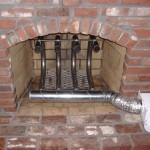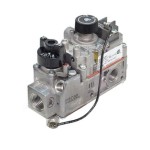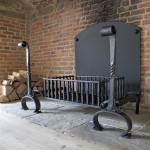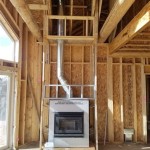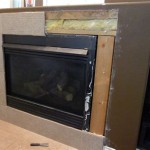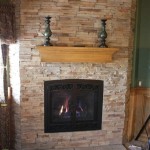Gas Fireplace Starter Kit: A Comprehensive Guide
A gas fireplace starter kit provides all the necessary components for initiating and maintaining a fire in a gas fireplace. These kits are designed to ensure a safe and efficient operation, offering an alternative to manually lighting a gas fireplace with a match or lighter. Understanding the contents of a typical kit, the installation process, and the considerations for selecting the right kit are crucial for a homeowner looking to enjoy the convenience and ambiance of a gas fireplace.
The primary function of a gas fireplace starter kit is to ignite the gas flow within the fireplace safely and reliably. It comprises various elements that work in conjunction to create and sustain a flame. The specific components included may vary depending on the manufacturer and the type of gas fireplace, but some common elements are consistently present.
Key Components of a Gas Fireplace Starter Kit
A standard gas fireplace starter kit typically includes several essential components, each serving a specific purpose in the ignition and control of the flame. Familiarity with these components is crucial for effective installation and troubleshooting.
Pilot Assembly: The pilot assembly is the heart of the starter kit. It consists of a small burner that maintains a continuous flame, known as the pilot light. This pilot light then ignites the main burner when the fireplace is activated. The assembly also includes a thermocouple or thermopile, which is a safety device that senses the presence of the pilot flame. If the pilot flame is extinguished, the thermocouple shuts off the gas supply to prevent a gas leak.
Thermocouple or Thermopile: This is a safety device essential for ensuring the safe operation of the gas fireplace. A thermocouple generates a small electrical current when heated by the pilot flame. This current keeps the gas valve open, allowing gas to flow to the main burner. If the pilot light goes out, the thermocouple cools down, the electrical current ceases, and the gas valve automatically closes, preventing gas from escaping into the home. A thermopile, on the other hand, generates a higher voltage and is often used in fireplaces with millivolt control systems.
Gas Valve: The gas valve controls the flow of gas to both the pilot light and the main burner. It is typically a manually operated valve or an electronically controlled valve, depending on the type of fireplace. The valve allows the user to turn the gas supply on or off and to adjust the flame height. In electronically controlled valves, a remote control or wall switch can be used to adjust the flame.
Igniter: The igniter is used to initially light the pilot flame. It can be a piezo igniter, which produces a spark when a button is pressed, or an electronic igniter, which uses electricity to generate a spark. The igniter initiates the combustion process, allowing the pilot flame to establish itself.
Gas Line Connector: This connector is used to connect the gas supply line to the gas valve of the fireplace. It is typically made of a flexible gas line, allowing for easy installation and connection. The connector must be approved for use with gas and be properly sized to ensure adequate gas flow.
Installation Considerations and Safety Measures
The installation of a gas fireplace starter kit requires careful planning and adherence to safety guidelines. It is highly recommended that a qualified gas technician perform the installation to ensure proper connections and safe operation. Incorrect installation can lead to gas leaks, carbon monoxide poisoning, or fire hazards.
Professional Installation: While DIY installation can be tempting, engaging a certified gas technician is crucial. These professionals have the expertise to properly connect the gas lines, test for leaks, and ensure that the fireplace complies with local building codes and safety regulations. They can also diagnose any existing problems with the fireplace and provide solutions.
Gas Line Inspection: Before installing a new gas fireplace starter kit, the existing gas line should be inspected for any signs of damage or corrosion. Any leaks or problems should be addressed before proceeding with the installation. The gas line should also be properly sized to accommodate the gas requirements of the fireplace.
Leak Testing: After the installation is complete, it is essential to test for gas leaks. This can be done using a soap and water solution. Any bubbles forming around the connections indicate a leak, which must be immediately addressed. Electronic gas leak detectors are also available for more precise testing.
Carbon Monoxide Detectors: Carbon monoxide (CO) is a colorless, odorless gas that can be deadly. Installing carbon monoxide detectors near the fireplace and in other areas of the home is crucial for early detection of CO leaks. These detectors should be regularly tested to ensure they are functioning properly.
Choosing the Right Gas Fireplace Starter Kit
Selecting the appropriate gas fireplace starter kit involves considering several factors, including the type of gas fireplace, the gas type (natural gas or propane), and the desired level of control and features. A mismatched kit can lead to inefficient operation or even safety hazards.
Gas Type: Ensure that the starter kit is compatible with the type of gas used in the home. Natural gas and propane require different components and have different pressure requirements. Using the wrong kit can result in improper combustion and safety risks. The gas type is usually clearly marked on the fireplace and the starter kit.
Fireplace Type: Different types of gas fireplaces, such as vented and ventless models, require different starter kits. Vented fireplaces rely on a chimney or vent to exhaust combustion gases, while ventless fireplaces burn gas more efficiently and do not require a vent. The starter kit must be compatible with the specific venting system of the fireplace.
Control System: Gas fireplaces can have different control systems, ranging from simple manual controls to more sophisticated electronic controls with remote operation. The starter kit should be compatible with the existing control system. Upgrading to a more advanced control system may require a different starter kit.
BTU Rating: The British Thermal Unit (BTU) rating of the fireplace indicates the amount of heat it can produce. The starter kit should be able to handle the gas flow required by the BTU rating of the fireplace. A starter kit that is too small may not provide adequate gas flow, while a starter kit that is too large may result in excessive gas consumption.
By carefully considering these factors and engaging a qualified technician, homeowners can ensure the safe and efficient operation of their gas fireplace. The convenience and ambiance provided by a properly installed and maintained gas fireplace enhance the comfort and value of the home.

Log Lighters Gas Starter Pipes Steel Cast Iron

How To Install A Log Lighter Fireplace Gas Starter Pipe

Unboxing The Snow Peak Pack Carry Fireplace Starter Kit Takibi Fire Grill

Icc Direct Vent Gas Venting Horizontal Termination Starter Kits

Icc Direct Vent Gas Vertical Termination Starter Kits

Want To Convert Gas Wood Fireplace Full Service Chimney

American Gas Log Aspen Whisper 30 In Vented Natural Fireplace Logs Complete Set With Pilot Kit And On Off Variable Height Remote Aw30hd2pss101r The Home Depot

American Gas Log Cheyenne Glow 18 In Vented Propane Fireplace Set With Complete Kit Safety Pilot Lit Cg18hdlp The Home Depot
.png?strip=all)
How To Install A Log Lighter Fireplace Gas Starter Pipe

Icc Direct Vent Gas Fireplace Vertical Termination Starter Kits

